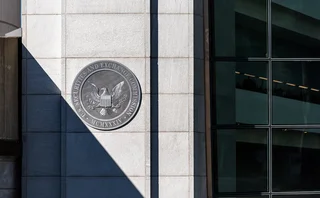
Banks warned over ‘criminal negligence’ in disregarding liquidity
The single biggest lesson risk managers can draw from the financial crisis is the critical importance of liquidity, said BlackRock’s chief risk officer, Bennett Golub, at the Risk USA conference in New York in October.
For financial firms, he equates the need to keep tabs on liquidity to the need for hospitals to maintain a power source for kidney dialysis machines. Failing to do so is “criminal negligence”, he says. “That isn’t to say there isn’t necessarily going to be that risk, but you need to think about it a whole lot.”
Liquidity is also pertinent when it comes to complex assets. Even when institutions have the financial wizardry to analyse and invest in these products, the liquidity of complex assets can easily break down, says Golub. During the crisis, there were many situations where companies with analytical know-how should have been investing aggressively in mortgage-backed securities, for instance. But those in a position to invest “had no capital and were clinging onto their lives for their jobs,” he says.
Elsewhere, the crisis has demonstrated that investors in securitised products need to go further than quantitative modelling techniques, Golub asserts. When using such models, firms need to be aware that data could be imperfect, incomplete or fraudulent.
Golub says market ructions have also brought a new type of risk to the fore – so-called policy risk. This is demonstrated by the rebound in markets for securitisations that are being supported by government programmes, he says. “There aren’t many quants that have a good idea of what goes on in Washington, but if you want to be an effective risk manager it’s very important.”
Only users who have a paid subscription or are part of a corporate subscription are able to print or copy content.
To access these options, along with all other subscription benefits, please contact info@risk.net or view our subscription options here: http://subscriptions.risk.net/subscribe
You are currently unable to print this content. Please contact info@risk.net to find out more.
You are currently unable to copy this content. Please contact info@risk.net to find out more.
Copyright Infopro Digital Limited. All rights reserved.
As outlined in our terms and conditions, https://www.infopro-digital.com/terms-and-conditions/subscriptions/ (point 2.4), printing is limited to a single copy.
If you would like to purchase additional rights please email info@risk.net
Copyright Infopro Digital Limited. All rights reserved.
You may share this content using our article tools. As outlined in our terms and conditions, https://www.infopro-digital.com/terms-and-conditions/subscriptions/ (clause 2.4), an Authorised User may only make one copy of the materials for their own personal use. You must also comply with the restrictions in clause 2.5.
If you would like to purchase additional rights please email info@risk.net
More on Risk management
SEC leadership change puts Treasuries mandate under scrutiny
FICC clearing models approved, but critics think delay could revive prospects of done-away trading
Markets Technology Awards 2025: Untangling the knots
Vendors jockeying for position in this year’s MTAs, as banks and regulators take aim at counterparty blind spots
Risk Awards 2025: The winners
UBS claims top derivatives prize, lifetime award for Don Wilson, JP Morgan wins rates and credit
An AI-first approach to model risk management
Firms must define their AI risk appetite before trying to manage or model it, says Christophe Rougeaux
BofA sets its sights on US synthetic risk transfer market
New trading initiative has already notched at least three transactions
Op risk data: At Trafigura, a $1 billion miss in Mongolia
Also: Insurance cartels, Santander settlement and TSB’s “woeful” customer treatment. Data by ORX News
Cyber risk can be modelled like credit risk, says Richmond Fed
US supervisors may begin to use historical datasets to assess risk at banks and system-wide
The changing shape of risk
S&P Global Market Intelligence’s head of credit and risk solutions reveals how firms are adjusting their strategies and capabilities to embrace a more holistic view of risk







